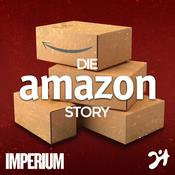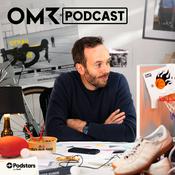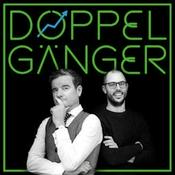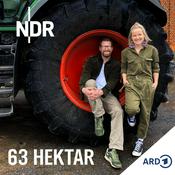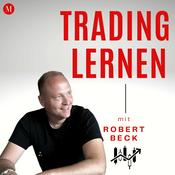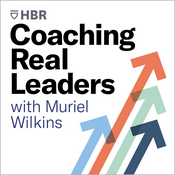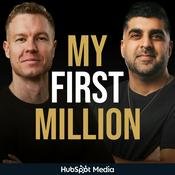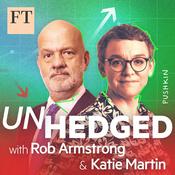53 Episoden

How to Get ChatGPT to Recommend You (AI SEO) - Tibo Maker
17.12.2025 | 7 Min.
In this episode of the Superhuman AI Podcast, we sit down with Tibo Maker to break down the new SEO game: ranking in an AI-first world where being mentioned by ChatGPT matters as much as ranking on Google. Tibo walks through Outrank, the AI SEO system built to help you find low-difficulty, high-volume keywords, publish content fast, and build the backlinks needed to actually compete.We dive into:- How ChatGPT decides what websites to recommend- Why ranking on Google still impacts whether AI mentions you- Finding low-competition keywords with high search volume- Creating content quickly without losing structure or relevance- The real role of backlinks in the AI SEO era- A backlink exchange marketplace and why relevance matters- What it costs to build authority manually vs doing it efficiently- The practical playbook to start ranking within weeksIf you’re a founder, builder, or operator trying to win distribution in the AI era, this episode is a clear, tactical guide to getting discovered by both Google and ChatGPT.Subscribe for deep conversations on AI, agents, and the future of intelligence.

The Easiest Way to Build Your Mobile App in Minutes? | Vishal Virani | Rocket.New
09.12.2025 | 36 Min.
What if a single sentence could generate a full production-grade app—front end, backend, database, dashboards, payments, mobile, and even e-commerce? In this episode, Vishal Virani, CEO of Rocket, shows us how their “vibe coding” platform is redefining software creation. This is the most complete, end-to-end demo we’ve seen: from one-shot app generation, to fully native Flutter mobile apps, to PayPal-powered storefronts, to slash-command precision edits, to automatic API integrations using Postman.Check out Rocket here: https://www.rocket.new/?utm_source=youtube&utm_medium=superhuman&utm_campaign=podcasttutorialWe dive into:- How Rocket turns a single sentence into full production-grade apps- One-shot app generation and why prompts no longer need 40+ messages- Building real dashboards, internal tools, and enterprise apps automatically- Native mobile apps with Flutter generated in minutes- PayPal storefronts with inventory, payments, analytics, and dynamic product creation- Slash-command precision mode for reliable UI, API, and color/theme changes- Superbase authentication, email alerts, multilang, and dynamic asset generation- Automatic API integration with Postman—no hallucinations, no manual wiring- How Rocket thinks about “vibe coding” vs true production solutions- A preview of Rocket’s upcoming autonomous research engine: from idea → competitive analysis → what to build nextIf you want to see how AI is collapsing the entire software development stack—from concept to fully functional product—this is one of the most advanced demonstrations to date.Subscribe for deep conversations on AI, agents, and the future of intelligence.

This App makes Viral TikToks in Minutes - Tibo Maker
08.12.2025 | 5 Min.
What if you could generate viral TikTok and Instagram content every single day—without filming, editing, or even opening the apps? In this episode of the Superhuman AI Podcast, we sit down with Tibo Maker, founder of Revid, to explore the AI engine that can turn any creator into a full-time content machine.Tibo walks through how Revid creates dozens or even hundreds of short-form videos automatically using your avatar, your voice, and trending content pulled from X. From scraping high-performing posts to building talking-head clips and auto-publishing them to TikTok, Reels, and YouTube Shorts—Revid handles the entire process end-to-end.We dive into:- How Revid creates viral short-form videos from a single idea or tweet- Generating dozens of videos automatically using your avatar or voice- Auto-publishing to TikTok, Instagram, and YouTube Shorts every day- Why this format consistently hits hundreds of thousands of views- How creators are scaling content output to “infinite” with AI- When manual editing still matters—and when to let AI take over- Why Tibo believes AI will redefine the entire creator workflowIf you’re a creator, founder, or operator looking to scale your social presence without burning out, this episode shows how AI can turn you into a content engine overnight.Subscribe for deep conversations on AI, agents, and the future of intelligence.

Tech CEO: AI Is Not As Smart As You Think! - Ashfaq Munshi
03.12.2025 | 1 Std. 15 Min.
Today’s AI can write code, pass exams, and generate images, but it still doesn’t know how to learn. In this episode of the Superhuman AI Podcast, we sit down with Ashfaq Munshi, CEO of Pepperdata and former CTO of Yahoo, to unpack what he calls the real problem with AI: models don’t build world models, don’t learn from experience, and don’t improve the way a child does.Ashfaq walks through the missing pieces in today’s LLMs, why world models and true learning will define the next decade, and how deep infrastructure from chips to Kubernetes to GPUs to power grid underpins every “AI breakthrough” headline you see. He also breaks down how Pepperdata squeezes 20-30% more efficiency out of massive GPU and Kubernetes clusters for some of the world’s biggest companies.We dive into:- Why Ashfaq believes today’s AI models “don’t know how to learn”- World models, robotics, and what real learning would look like- The hidden infrastructure stack that makes modern AI possible- How Pepperdata optimizes GPUs and Kubernetes to save real money- Data centers, power, cooling, and the coming energy crunch- US vs China in AI: talent, chips, research, and long-term advantage- Career advice for builders who want to work on decade-long problemsIf you care about where AI goes after the current hype cycle down at the metal and up at the level of real intelligence this conversation with Ashfaq cuts straight to the core issues.Subscribe for deep conversations on AI, agents, and the future of intelligence.

This AI Does Everything — Flo Crivello, CEO of Lindy
21.11.2025 | 16 Min.
What if an AI could run your entire workflow—email, calendar, meetings, research, scheduling, follow-ups, even ordering food—without you lifting a finger? In this episode of the Superhuman AI Podcast, we sit down with Flo Crivello, CEO of Lindy, to explore the most capable AI assistant we’ve seen yet: an agent that actually does the work for you.Flo shows real agents operating autonomously: logging into websites, replying to emails, preparing meeting briefs, joining calls, taking notes, updating docs, and coordinating across apps—acting with judgment, memory, and initiative. This isn’t automation. It’s real, goal-driven intelligence.We dive into:- How Lindy agents plan, reason, and take action on real computers- Email + calendar agents that handle your entire schedule end-to-end- Research agents that prep meeting dossiers automatically each morning- Live browser-control agents completing complex tasks without instructions- How AI agents collaborate with each other across your workflow- Why most customer support should be fully automated in 2025- The future of human work when AI handles the admin burdenIf you’re a founder, operator, or builder searching for the real future of AI agents, this episode shows what’s possible today—and what’s coming next.Subscribe for deep conversations on AI, agents, and the future of intelligence.
Weitere Wirtschaft Podcasts
Trending Wirtschaft Podcasts
Über Superhuman AI: Decoding the Future
Höre Superhuman AI: Decoding the Future, Handelsblatt Today – Der Finanzpodcast mit News zu Börse, Aktien und Geldanlage und viele andere Podcasts aus aller Welt mit der radio.de-App
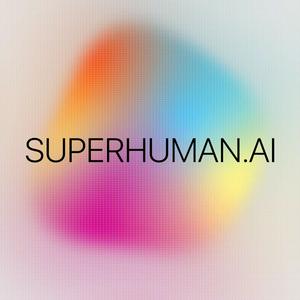
Hol dir die kostenlose radio.de App
- Sender und Podcasts favorisieren
- Streamen via Wifi oder Bluetooth
- Unterstützt Carplay & Android Auto
- viele weitere App Funktionen
Hol dir die kostenlose radio.de App
- Sender und Podcasts favorisieren
- Streamen via Wifi oder Bluetooth
- Unterstützt Carplay & Android Auto
- viele weitere App Funktionen
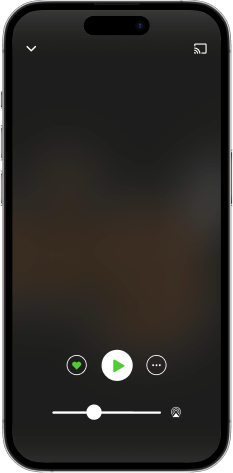

Superhuman AI: Decoding the Future
App laden,
loshören.

